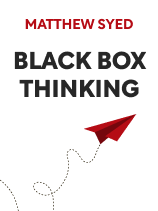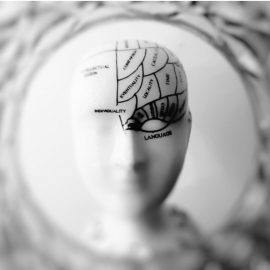

This article is an excerpt from the Shortform book guide to "Black Box Thinking" by Matthew Syed. Shortform has the world's best summaries and analyses of books you should be reading.
Like this article? Sign up for a free trial here .
Does learning through practice drive innovation? Which institutions learn through trial and error and which are too afraid of failure?
Learning through practice is one of the main concepts in the book Black Box Thinking. By recognizing which institutions are learning-oriented and which are failure averse, you can explore why some industries improve by building on mistakes.
Keep reading to find out why learning through practice drives progress, although only some organizations do it.
Learning Through Practice Influences Theory
Building on the importance of testing in bottom-up learning, Syed argues that our standard view of progress—that scientific theories enable technological innovation—is backward. Instead, Syed suggests that learning through practice leads to practical know-how, which in turn influences theory.
For example, Thomas Edison developed a method of recording sound by experimenting with telegraph technology and learning through practice. Though he lacked precise theoretical knowledge of the invention beforehand, he reached a working phonograph through trial and error.
In the end, Syed argues that theory and practice reciprocally drive change in a complex interplay of influence. In other words, top-down and bottom-up approaches complement one another, though he doesn’t explain how.
(Shortform note: In Mastery, Robert Greene asserts that chance plays a crucial role in scientific discoveries, and he suggests priming your life for such serendipity: Our brains naturally seek out connections between ideas, and we can amplify this effect by surrendering control. When we’re focused, he argues, our attention narrows and reduces the range of ideas we’re engaged with. To counteract this, take two steps: First, widen your information intake to include sources you don’t normally use. This can stimulate new connections. Second, take plenty of time to rest, relax, and engage in casual activities, like sports or music. This keeps your mind flexible and open to new ideas.)
Where We Are Today
In modern society, Syed writes that some institutions rely on learning through practice, including medicine, the airline industry, athletic organizations, and some businesses. Meanwhile, others still operate on the “divine knowledge” paradigm—Syed highlights health care and the courts.
Let’s examine how he compares and contrasts these two institutional styles. (Shortform note: We’ll use “institution” to refer to an area of society, and “organization” to mean a specific agent within that institution—for example, we have the institution of public health care, and organizations like Griffin Hospital. When we say that an institution neglects to learn, we mean that the organizations within that institution don’t learn, as Syed argues.)
Learning-Oriented Institutions
The organizations within a learning-oriented institution (Syed’s “open-loop systems”), such as lean startups in the business world, use failures to improve their operations and innovate solutions to tough problems. These organizations demonstrate learning through practice.
For example, a successful football team will hold post-game retrospectives so coaches can reflect with players on what went well and what went poorly. This clarifies what to improve on, using failures as fuel for success.
(Shortform note: In The Fifth Discipline, Peter Senge describes a “learning organization” as an organization where people embrace open-minded thinking, aspire to their creative potentials, and continually learn together. He outlines five disciplines to achieve this: 1) Create a shared vision to align leadership and staff, 2) Use systems thinking to understand your organization holistically, 3) Clarify your existing mental models and stay open to adapting them, 4) Create teams that learn together and embrace honest mistakes, and 5) Help employees develop personal mastery by training the subconscious mind to handle complexity.)
Failure-Averse Institutions
The organizations within a perfection-oriented institution—such as hospitals in the health care system or certain political institutions—neglect to learn from failure. This happens because their cultures preclude the acknowledgment and assessment of mistakes. In other words, to admit a mistake was made would damage their reputation, so they bury it. As Syed says, this attitude reflects the “divine knowledge” paradigm and perpetuates harmful, preventable errors. These institutions avoid learning through practice.
For example, Donald Trump’s administration routinely expelled dissenters and he denied his fallibility. Since Trump inadvertently pushed away anyone that could’ve helped correct his administration’s missteps, they were unable to operate effectively.
(Shortform note: Mary Trump, the niece of Donald Trump, explains in Too Much and Never Enough that Donald Trump has been enabled since a young age. Through analysis of Trump’s family history and her own experiences, she argues that he’s behaved poorly for decades and never faced repercussions. Because he’s never been punished for mistakes or wrongdoings, he can’t conceive that he could be wrong about anything, and so he assumes that someone else is to blame. Any institution with a leader who’s so apt to cast blame becomes failure-averse, since any perceived weakness could get you fired.)

———End of Preview———
Like what you just read? Read the rest of the world's best book summary and analysis of Matthew Syed's "Black Box Thinking" at Shortform .
Here's what you'll find in our full Black Box Thinking summary :
- How an organization’s culture and systems either promote or prevent learning
- The steps for learning from failure in our complex world
- How to shift mindsets around failure to promote a learning-oriented institution






